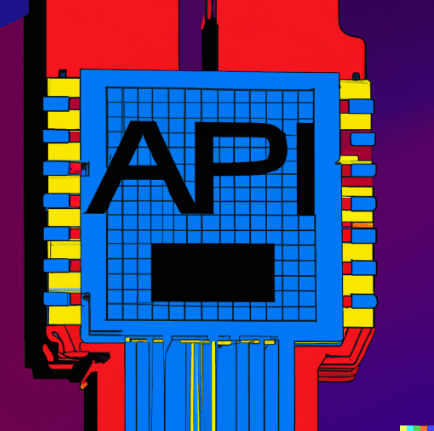Microsoft’s Game-Changing Move: Unveiling Custom AI Chips for Azure Domination!
At the Microsoft Ignite conference, the tech giant introduced two custom-designed chips, the Microsoft Azure Maia 100 AI Accelerator, and the Microsoft Azure Cobalt 100 CPU, aiming to redefine the landscape of AI workloads within the Azure cloud computing service. This strategic development reflects Microsoft’s commitment to becoming the leader in AI innovation, with a particular focus on maximizing performance, efficiency, and sustainability.

The Maia 100 AI Accelerator is engineered to handle large language models such as GPT 3.5 Turbo and GPT-4, forming the backbone of Microsoft’s Azure OpenAI services and Microsoft Copilot. With an impressive 105 billion transistors manufactured on a cutting-edge 5-nm TSMC process, Maia is poised to elevate the capabilities of AI applications hosted on the Azure platform.
In parallel, the Cobalt 100 CPU, a 128-core ARM-based processor, is designed for conventional computing tasks, enhancing the efficiency of applications like Microsoft Teams. Both Maia and Cobalt exemplify Microsoft’s dedication to tailored solutions, as they will be exclusively employed for internal use, reinforcing the company’s vision of being the premier “Copilot company.” As the tech industry grapples with chip shortages, exacerbated by soaring demand for AI-driven services, Microsoft’s decision to venture into custom chip development is strategic and timely. The move aligns with a broader trend in the industry, with companies like Amazon, OpenAI, IBM, and AMD also exploring custom AI accelerator chips.
Microsoft acknowledges the challenges posed by the high cost of delivering AI services, a hurdle that has prompted the company to take matters into its own hands. By developing in-house chips, Microsoft gains more control over design choices and details, allowing for a seamless integration of hardware and software, tailored explicitly for its cloud and AI workloads. Contrary to popular belief, this isn’t Microsoft’s initial foray into chip development. The company has a rich history of collaborating on silicon for Xbox consoles and co-engineering chips for its Surface tablets. Drawing on these experiences, Microsoft’s latest endeavor reflects a strategic shift toward holistic control over its technology stack, from the foundational silicon to the software layer.
While Microsoft hasn’t released benchmark figures for Maia and Cobalt, the emphasis on performance-per-watt ratios suggests a keen focus on efficiency. According to Wes McCullough, Microsoft’s corporate VP of hardware product development, the architecture and implementation of these chips prioritize power efficiency, a critical consideration given the energy-intensive nature of AI workloads.
“The chips will nestle onto custom server boards, placed within tailor-made racks that fit easily inside existing Microsoft datacenters. The hardware will work hand in hand with software – co-designed together to unlock new capabilities and opportunities,” states Microsoft in its announcement blog, underscoring the seamless integration of hardware and software for optimal performance.
Recognizing that no tech company operates in isolation, Microsoft remains committed to collaborating with third-party chip providers. The company plans to incorporate the latest Nvidia H200 Tensor Core GPU into its infrastructure next year, demonstrating a pragmatic approach to leverage a diverse ecosystem of hardware solutions. In a bid to offer customers a spectrum of choices, Microsoft will also integrate AMD MI300X-accelerated virtual machines into Azure, further expanding the array of options for its clientele. This commitment to collaboration underscores Microsoft’s customer-centric approach, ensuring that the end-users have access to the best and most diverse set of tools.
Microsoft’s emphasis on a systems approach to infrastructure is evident in the Maia-Cobalt integration. Rani Borkar, corporate VP for Azure Hardware Systems and Infrastructure, highlights the importance of software as Microsoft’s core strength but emphasizes the company’s identity as a systems company. The synergy between hardware and software, from chip design to datacenter architecture, reflects a holistic strategy to deliver superior AI and cloud services.
The introduction of Maia and Cobalt prompted Microsoft to design custom server racks to accommodate the unique requirements of Maia 100 server boards. These tailor-made racks, wider than typical configurations, exemplify Microsoft’s commitment to addressing the specific needs of AI workloads, including provisions for power and networking cables essential for the demands of AI tasks.
AI workloads, characterized by intensive computational demands, necessitate innovative cooling solutions. Microsoft’s implementation of liquid cooling, using a “sidekick” system alongside Maia 100 racks, showcases the company’s ingenuity in addressing thermal challenges efficiently. This combination of custom racks and cooling solutions underscores the importance of a comprehensive systems approach to infrastructure design. Microsoft’s venture into custom silicon marks a significant milestone in the company’s evolution. As the tech giant plans to expand its range of options, including second-generation versions of the Azure Maia AI Accelerator series and the Azure Cobalt CPU series, the mission remains clear: optimize every layer of the technological stack, from core silicon to end services.
“Microsoft innovation is going further down in the stack with this silicon work to ensure the future of our customers’ workloads on Azure, prioritizing performance, power efficiency, and cost,” affirms Pat Stemen, partner program manager on the Azure Hardware Systems and Infrastructure team.
In unveiling the Maia 100 AI Accelerator and the Cobalt 100 CPU, Microsoft has positioned itself at the forefront of AI innovation. The integration of custom silicon into its infrastructure reflects a strategic move to address the challenges of a dynamic and demanding AI landscape. As Microsoft continues to co-evolve hardware and software, the Maia-Cobalt synergy promises not just increased performance and efficiency but a blueprint for the future of AI acceleration in the cloud. For all my daily news and tips on AI, Emerging technologies at the intersection of humans, just sign up for my FREE newsletter at www.robotpigeon.beehiiv.com







